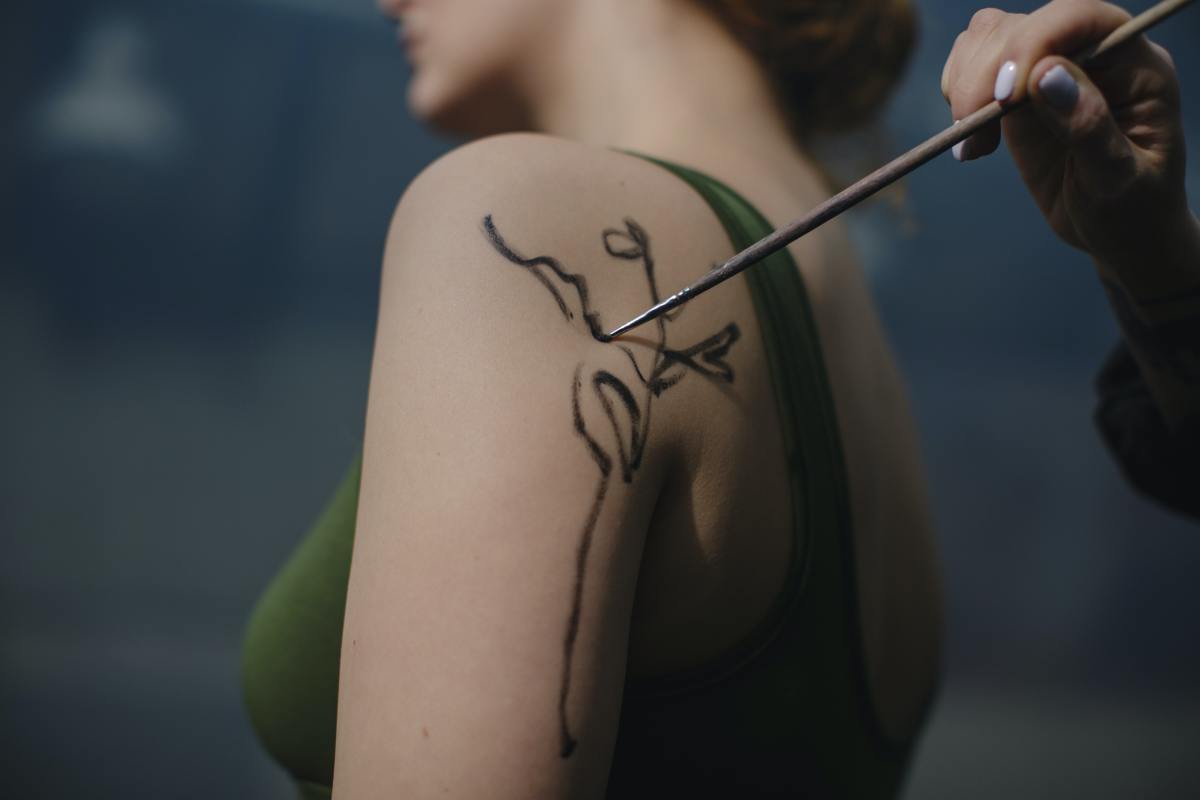How to create new ideas: methods, tools, tips
When you need to create new ideas..
In any area of your life you benefit from creating new ideas. If you are marketer and you need to invent new product - you should know how to create new ideas. If you are sales representative and you need new ways of persuading your potential customers - you should know how to create new ideas. Or you are probably just busy mom and you go crazy trying to find new games for your little imp..
The article discusses methods, tools and tips as well as detailed instructions on how to create new ideas.
"I need to create new ideas! I need to create new ideas! I nee.."
What do you usually do when you need to create new ideas? I think 80% of us sits down and thinks hard for hours staring at the laptop. Meanwhile, this pose is not perfect for inventing, not to mention the fact that hard thinking is exactly opposite to creating. You should be relaxed, flexible and unrestrained to create something really exciting. Do you remember where you came up with your best idea? Most likely, it was your bathroom, when you were relaxed laying in bath and looking up.
Psychology says there are 3 states of mind: "I am Dreamer", "I am Critic", and "I am Realist". We all can be Dreamers or Critics or Realists in particular time.
Looking for new ideas?
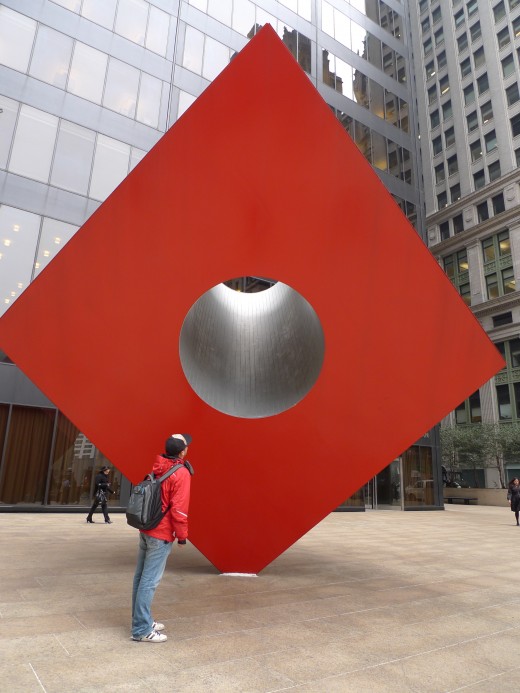
Dreamer, Critic and Realist help to create new ideas
Dreamer thinks that everything is possible, he is optimist and doesn't see any obstacles. He looks at the world through rose-colored glasses. Typical pose is relaxed, settled back into chair, legs extended forward, hands behind head and looking up. Try to take this pose and think about something sad. I bet you can't do it. It's trick of our brain which is always aligned with body. Body shows what brain thinks and brain thinks what body shows. This is pose for positive thinking, for dreaming.
''But you can't dream all the time, there are plenty of difficulties in real life to think about", says Critic. Yeah, this is time to meet Critic. He knows all obstacles you can meet in your new adventure, and he is sure you'll meet them all. Typical pose? Put your elbows on your knees and look down. Note, your thoughts have changed. "Why do I spend time reading this rubbish article while I need to do so many things?!" "How are you going to crossbreed chili with strawberry while you know nothing about biology! Have you counted how much money would cost your sudden whim?";
Realist is somewhere between Critic and Dreamer. He focuses on how to make things happen. He focuses on algorithm, technology, process. But he doesn't consider how many resources you need to reach your goal. His pose is sitting straight and looking straight. His thoughts are "You need to study how to make selection and crossbreeding, you need to find somebody experienced in it who would agree to consult you, then you should buy field for your tests, seeds, etc". Realist establishes time frames and milestones.
The main idea is you'll never create any idea if you are in mindset of Critic or Realist. However, you'll never implement your idea without help of Critic and Realist. You need them to work together! In the steps below I'll show you how to create new ideas using your inner Dreamer, Critic and Realist.
3 types of mindset
Dreamer
| Realist
| Critic
| |
|---|---|---|---|
He looks..
| up
| straight
| down
|
He thinks about...
| possibilities
| technology
| resources
|
He doesn't think about..
| resources, time, technology
| resources, ideas
| ideas, technology
|
Use 3 types of mindset to create new ideas

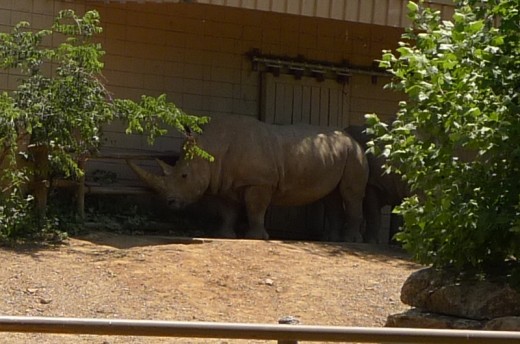
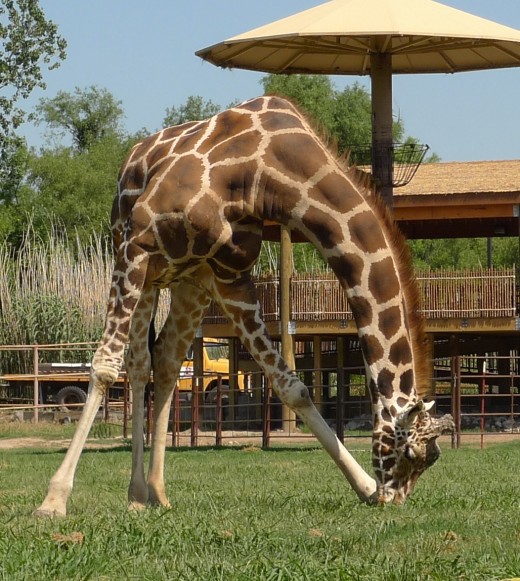
How to use this model to create new ideas
- Place where you're right now is called Meta position.
- Find a place in your room which you consider perfect for dreaming. It's not necessarily to choose your foam bath! Pick up your first thought of appropriate place, trust your unconscious! This will be your Dreamer point. Stand or sit there in the pose of Dreamer. Head and eyes look up, body is relaxed. Then remember concrete situation in past when you were very creative, burst with ideas and felt free. Spend some time 'living' in that situation: feeling how you felt at that time, hearing voices your heard at that time, seeing things you saw at that time. Spend enough time doing this, and then leave to Meta position.
- You are in Meta position. Here you stop thinking about anything. You jump, clap hands, shake yourself - in order to shake off a Dreamer and be yourself in your room, wearing your recent clothes and hearing sounds around.
- Then find a place for Realist (Realist point). Stand or sit there in the pose of Realist. Look straight, pose is symmetric. Remember concrete situation when you were very productive in organizing ideas into plans that worked. Again, spend some time 'living' in that situation: feeling how you felt at that time, hearing voices your heard at that time, seeing things you saw at that time. Spend enough time doing this, and then leave to Meta position.
- You are in Meta position. Here you stop thinking about anything. You jump, clap hands, shake yourself - in order to shake off a Realist.
- Then find a place for Critic (Critic point), remember it shouldn't be too close to neither Dreamer nor Realist points. Stand or sit there in the pose of Critic. Look down, stoop down a little bit, pose could be slightly asymmetric. Then remember concrete situation when you were able to provide constructive criticism. Spend some time 'living' in that situation: feeling how you felt at that time, hearing voices your heard at that time, seeing things you saw at that time. Spend enough time doing this, and then leave to Meta position.
- You are in Meta position. Here you stop thinking about anything. You jump, clap hands, shake yourself - in order to shake off a Critic.
- You are still in Meta position. Now (finally!) is time to set your goal. It could be goal to create ideas or any other task. You will move from Dreamer point to Realist point and from Realist point to Critic point, discussing your goal / idea with each role.
- Go to Dreamer point. Stand or sit there in the pose of Dreamer. Head and eyes look up, body is relaxed. View your task as Dreamer, imagine it without any limitations, as if you had endless resources, endless money, endless time, and access to anything you would need, and ability to do everything. Create your boldest ideas here! When you finalized your beautiful, crazy, bold ideas, then go to Realist point. Remember: your result in Dreamer point is only ideas, here you don't care how to implement it, how much would it cost, how much time would it take, etc.
- You are in Realist point. Stand or sit there in the pose of Realist. Look straight, pose is symmetric. Now you view Dreamer's ideas from the eyes of Realist. Think about steps you need to follow to implement these ideas. You still don't care about money or time or any other resources. You should male brilliant plan to make the idea come true. When you finalized the plan, go to Critic point.
- You are in Critic point. Stand or sit there in the pose of Critic. Look down, stoop down a little bit, pose could be slightly asymmetric. Your task is to evaluate Realist' plan. Now your should make constructive comments about resources (time, money, skills, etc.) as well as overall plan evaluation. When you finish with criticism, go to Dreamer point. In Dreamer point you should work further on your ideas in order to implement Critic' comments.
Then repeat steps 9-11 until all participants (Dreamer, Critic, Realist) agreed with the idea and implementation plan.
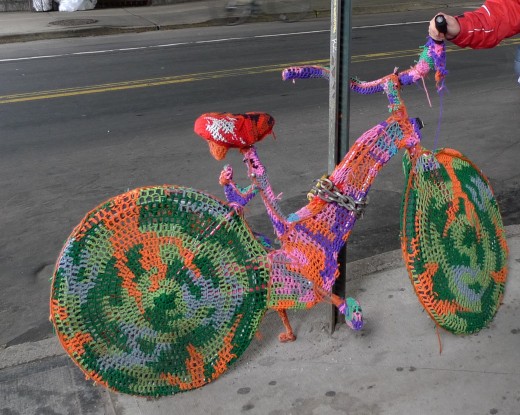
Exercise to boost your natural creativity
Take any item and try to create as many uses for it as possible. E.g., My eyes fell on the napkin. What are possible uses of the napkin? Except obvious ones, you can use it as flower wrapper, as head cover from the sun, crumpled up napkins can be toys for your kitten. If you make small hole in the center of napkin then you can use it as poncho for a doll. Also you can make snowflakes from napkins. Napkin can be cover for your book. If napkin is big and colorful then you can use it as cloth bracelet. If you wrap beans in napkin and shake it - then you get simple rattle, etc..
Do this exercise every day while you go to the work or during shower, and see results.
You never know where your ideas could come from..
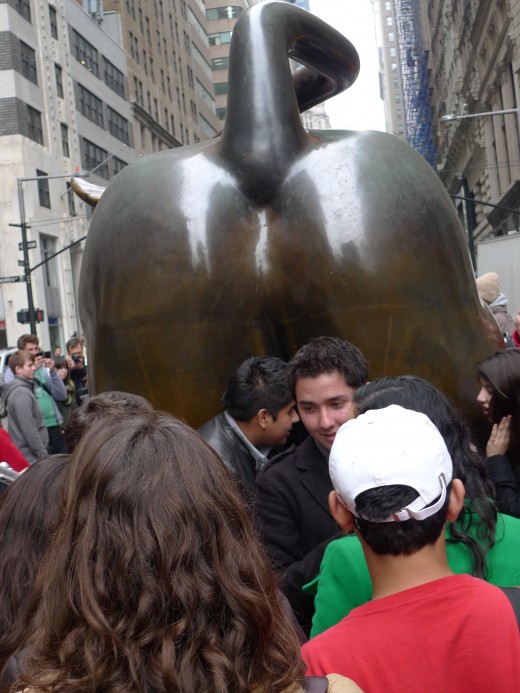
3 approaches to create MORE new ideas
1. Parallel worlds
Let me explain with example. You try to invent new chair. Then try to think about other products, cultures, movies, sciences, magazines, etc - so-called 'paralleled worlds'. Pick one 'paralleled world' idea and mix with chair. Try to imagine what kind of chair would be in such world.. What if I take idea of Japanese nail art? Then I'll probably create a chair which will have such patterns. Or it could be chair, which one could paint in Japanese nail art style by himself using colors and brushes which go with chair.. Or I pick "Big Bang Theory" sitcom world and make chair for Sheldon, chair that would be extremely comfortable, soft and packed with his famous quotes.
2. What if..
Let's continue with chair. Firstly make a list of chair's attributes:
- four legs
- back
- soft seat
- materials: wood, plastic, leather
- uses: chair is placed on solid ground and you seat on it.
Secondly, pick one attribute and change it drastically. Start with saying ''what if ...". Let's choose 'four legs' attribute. What if chair doesn't have legs at all? Then you have chair which is perfect for people who love to seat on the floor but in the same time their back is supported. What if there is no soft seat on the chair, but special hard dots and small needles to massage your bottom. What if chair doesn't stand on the ground, but in the water. Then you seat there soaking your legs into water while your back is being supported.
3. Mix and Match
Now you again make list of attributes. But your purpose is to think up as many as you can. Think about any varieties, any components, any uses, any purposes of chair. You take post-it notes and write one attribute per note. For example, I came up with soft, high chair, leather, childish, legs, back, sex on the chair, wood, bar chair, low chair, cloth, shape, hard, warm, colorful, plastic, metal, computer chair, relaxing chair, chair for watching tv, etc. Then you stick all post-it notes on the wall in random order, close your eyes and pick 3 post-it notes. Let it be soft, cloth and sex on the chair. Your goal is to intensify these 3 attributes as much as possible. Thereby you can invent very big chair, which would be comfortable for two, very soft (covered with flannel) and flexible to fit any position, it probably could change width of seat, angle of seat, armrest position, you could remove armrest, lower or raise it.
Mind map: how to create new ideas
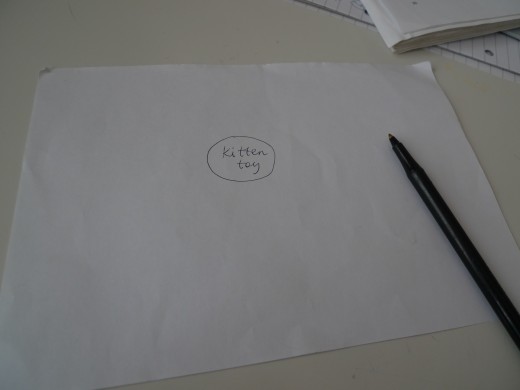
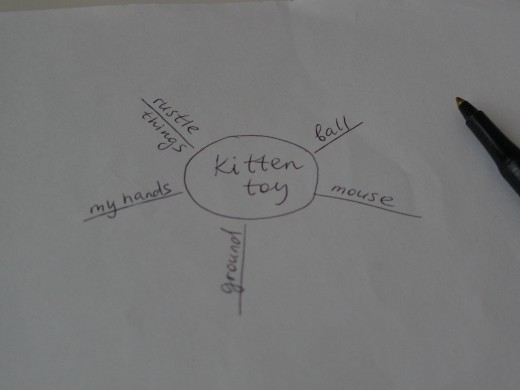
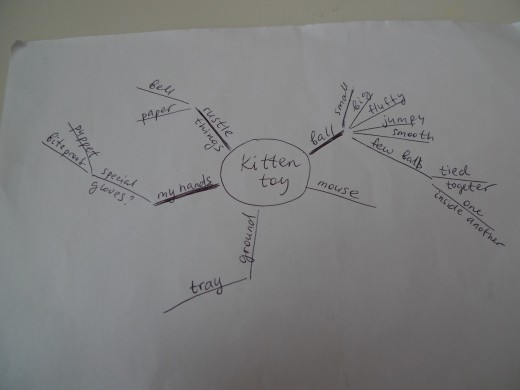
How to organise your ideas in brain-friendly way
How to use mind map to create new ideas
Do you know how our brain works? Our brain doesn't make lists, bullets or paragraphs of text to store or process information. It makes CONNECTIONS and ASSOCIATIONS. So if you organize your thoughts in network way, you'll really help your mind to digest it and come up with new ideas. So give a try to mind mapping. It is way of organizing information, when you start with your key problem / task / word and make associations to it.
How to make mind map?
Let me explain with example. You want to invent new kitten toy. So you write down 'kitten toy' in the center of sheet. Then you draw lines from it and write you first associations around lines (1, maximum 2 words per line). My associations are: ball, mouse, rustle things, my hands, ground. Then you write associations to these words or new associations to center word. Keep writing and write as many associations as possible. You'll most probably find few worthwhile ideas in 3-4 level of mind map. As for example I think that idea of puppet gloves which are bite-proof is worth further investigating as well as idea of few balls tied together.
Mind mapping is also very useful (and fast!) way for taking notes. And you will certainly have more fun exploring your notes afterwards.
© Bobri Dobri, certified NLP practitioner, experienced marketeer


